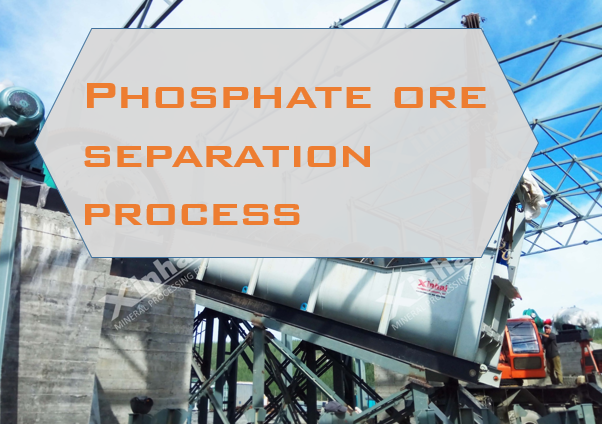Phosphate ore separation process
2024-10-02 Xinhai (1489)
2024-10-02 Xinhai (1489)
If you have any questions, please contact us through the following ways, we will give you more and better assistance!

Phosphorus, a key element in life, plays a vital role in industry, agriculture, medicine and biotechnology. As a non-renewable non-metallic mineral resource, phosphate rock is an important raw material for the global chemical industry.

There are various methods for the beneficiation of phosphate rock, including flotation, magnetic and electric separation, gravity separation, heavy medium separation, photoelectric separation, roasting-digestion and chemical separation. Among them, flotation has become the mainstream due to its wide applicability and efficient separation effect. In addition to the above methods, selective flocculation, magnetic cover separation and electrostatic separation are also used in specific cases.
In the flotation process, the beneficiation strategy needs to be customized according to the nature of the original ore in view of the symbiotic characteristics of collophanite and fine-grained minerals such as carbonate minerals and silicate minerals. Since the floatability of collophanite is similar to that of the associated gangue, its flotation process is diverse, including direct flotation, reverse flotation, reverse-direct flotation, direct-reverse flotation and double reverse flotation. Direct flotation is suitable for recovering apatite from magmatic and metamorphic apatite ores, while reverse flotation is mainly used to separate useful phosphate minerals from gangue minerals such as dolomite and calcite. For those phosphate ores that are difficult to enrich by single direct flotation or reverse flotation, direct-reverse flotation and reverse-direct flotation process are particularly critical.
In addition to the traditional flotation process, the scrubbing and desludging process has shown significant advantages in treating weathered or clay-rich phosphate ores. This process removes impurities from the ore by physical methods, which not only improves the grade of phosphate concentrate, but also avoids the use of chemical agents and reduces the impact on the environment.
The heavy medium beneficiation process focuses on the pre-selection of carbonated phosphate minerals and achieves effective separation of minerals by adjusting the pulp density. The roasting and digestion process uses chemical methods to treat high-carbonate phosphate ore. Although this process is effective in improving the grade of phosphate concentrate, it has not yet been widely used due to its high energy consumption, complex operating procedures and high costs.
In summary, the beneficiation of phosphate ore needs to be customized according to the specific properties and grade of the ore to ensure efficient use of resources and maximize economic benefits. With the continuous advancement of technology and the improvement of environmental protection requirements, phosphate ore beneficiation will pay more and more attention to efficient, environmentally friendly and low-cost technical paths to better serve the needs of industry, agriculture and biology.